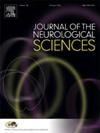Delirium screening in the neurointensive care unit: Comparison of the confusion assessment method for the intensive care unit and intensive care delirium screening checklist
IF 3.2
3区 医学
Q1 CLINICAL NEUROLOGY
引用次数: 0
Abstract
Background
Delirium is a common and serious potential complication of an ICU stay, associated with risk of mortality and worse outcomes. Screening tools including ICDSC and CAM-ICU have been validated in critical care populations, however, few studies have examined their utility in neurocritically ill patients. Research on delirium is highly segregated with varying terminology used among specialties, making research efforts difficult.
Objectives
Evaluate which screening tool is more feasible in neurocritically ill patients.
Methods
Single-center, retrospective analysis of a prospective QI initiative in a neurosciences ICU at a tertiary medical center in Chicago, IL. Patients admitted January 2019–2020 were screened for delirium with ICDSC, CAM-ICU and “gold-standard” DSM-5 throughout ICU stay. 206 patients were included who underwent 1442 assessments. Agreement of detection tools assessed using Fleiss' kappa.
Results
Prevalence of delirium using DSM-5 criteria was 1.6 %. Of the 1442 assessments, 116 were CAM-ICU-positive (8 %) and 343 were ICDSC-positive (23.8 %). The three tools had a kappa-agreement of 0.249. Of the 23 patients with confirmed delirium per DSM-5, 10 (4.8 %) were also positive for ICDSC but negative for CAM-ICU. 7 patients with a positive DSM-5 diagnosis were negative for both the CAM-ICU and ICDSC. CAM-ICU: sensitivity 26 %, specificity 94.5 %. ICDSC: sensitivity 69.5 %, specificity 87.6 %.
Conclusions
Current methods for detection of delirium in the neurocritically ill are imperfect, and terminology bias exists in the literature, limiting data comparison. While limited, the ICDSC appears a more sensitive tool for detection of delirium in the neurocritically ill compared to CAM-ICU. Larger validation studies are warranted.
神经重症监护病房谵妄筛查:重症监护病房混淆评估方法与重症监护谵妄筛查清单的比较
背景:谵妄是ICU住院中一种常见且严重的潜在并发症,与死亡风险和较差的预后相关。包括ICDSC和CAM-ICU在内的筛查工具已经在重症监护人群中得到验证,然而,很少有研究检查它们在神经危重症患者中的效用。谵妄的研究是高度隔离的,不同专业使用不同的术语,使研究工作变得困难。目的评价哪种筛查工具在神经危重症患者中更可行。方法:对伊利诺伊州芝加哥一家三级医疗中心神经科学ICU的前瞻性QI计划进行单中心回顾性分析。2019年1月至2020年1月入院的患者在ICU住院期间使用ICDSC、CAM-ICU和“金标准”DSM-5筛查谵妄。206名患者接受了1442次评估。使用Fleiss kappa评估检测工具的一致性。结果根据DSM-5诊断标准谵妄的患病率为1.6%。在1442例评估中,116例cam - icu阳性(8%),343例icdsc阳性(23.8%)。这三个工具的kappa一致性为0.249。在DSM-5中确认谵妄的23例患者中,10例(4.8%)ICDSC阳性,但CAM-ICU阴性。7例DSM-5阳性患者CAM-ICU和ICDSC均阴性。CAM-ICU:敏感性26%,特异性94.5%。ICDSC:敏感性69.5%,特异性87.6%。结论目前神经危重症谵妄的检测方法尚不完善,文献中存在术语偏差,限制了资料的比较。与CAM-ICU相比,ICDSC是一种检测神经危重症谵妄的更敏感的工具。更大规模的验证研究是必要的。
本文章由计算机程序翻译,如有差异,请以英文原文为准。
求助全文
约1分钟内获得全文
求助全文
来源期刊

Journal of the Neurological Sciences
医学-临床神经学
CiteScore
7.60
自引率
2.30%
发文量
313
审稿时长
22 days
期刊介绍:
The Journal of the Neurological Sciences provides a medium for the prompt publication of original articles in neurology and neuroscience from around the world. JNS places special emphasis on articles that: 1) provide guidance to clinicians around the world (Best Practices, Global Neurology); 2) report cutting-edge science related to neurology (Basic and Translational Sciences); 3) educate readers about relevant and practical clinical outcomes in neurology (Outcomes Research); and 4) summarize or editorialize the current state of the literature (Reviews, Commentaries, and Editorials).
JNS accepts most types of manuscripts for consideration including original research papers, short communications, reviews, book reviews, letters to the Editor, opinions and editorials. Topics considered will be from neurology-related fields that are of interest to practicing physicians around the world. Examples include neuromuscular diseases, demyelination, atrophies, dementia, neoplasms, infections, epilepsies, disturbances of consciousness, stroke and cerebral circulation, growth and development, plasticity and intermediary metabolism.
 求助内容:
求助内容: 应助结果提醒方式:
应助结果提醒方式:


